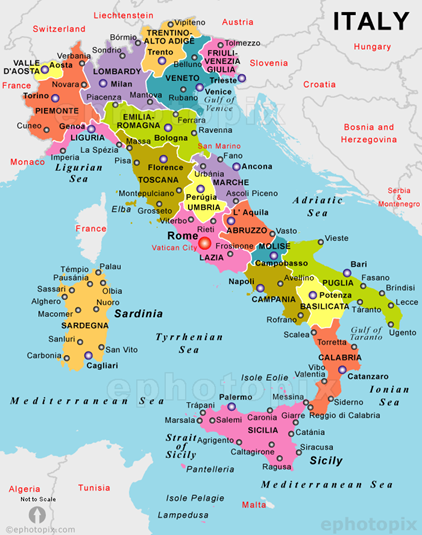In News:
- Giorgia Meloni won a clear majority in Italy’s general election, setting herself up to become the country’s first female Prime Minister at the head of the most right-wing government since World War II.
What’s in today’s article:
- Italy’s Political System (Type of democracy, Lower & Upper House, etc.)
- Electoral Process (System followed, Who can vote, etc.)
- News Summary
Italy’s Political System:

- Italy is a parliamentary republic with a head of government - the Prime Minister - appointed by the President who is the head of state.
- The Constitution of the Italian Republic was enacted by the Constituent Assembly on 22nd December 1947.
- The Parliament is composed of 2 houses –
- Chamber of Deputies (400 seats) is the Lower House,
- Senate of the Republic (200 seats) is the Upper House.
- The country is subdivided into 20 regions. 5 of these have a special autonomous status, enabling them to pass legislation on some local matters.
Electoral System:
- For almost half a century after World War II, Italy’s electoral system was based on proportional representation.
- In Proportional Representation, seats are awarded to political parties according to the proportion of the total vote that they receive.
- Between 1993 and 1995, several changes were made by national legislation and popular referenda.
- In the current electoral system, 63% of the seats will be allocated based on proportional representation system. The rest (37%) are allocated by the first-past-the-post-principle.
- Also, a number of bonus seats are allocated to the winning coalition – in the Chamber of Deputies – to guarantee a majority for the victors.
- Candidates can compete in parties or coalitions and voters need to give one vote each for the Chamber and the Senate.
Who is eligible to vote?
- All citizens 18 years and older may vote.
- The turnout for elections in Italy is high, often reaching well over 80 percent of the electorate for parliamentary elections.
- The Constitution of Italy also provides that 50,000 members of the electorate may jointly present a draft bill to parliament.
What is First Past the Post System?
- In first past the post system, the candidate with the highest number of votes is the winner of the congressional seat. The losing party or parties win no representation at all.
- In India, elections to Lok Sabha and State Legislative Assemblies are carried out through first past the post system.
News Summary:
- Giorgia Meloni won a clear majority in Italy’s general election, setting herself up to become the country’s first female Prime Minister at the head of the most right-wing government since World War II.
- Her alliance claimed about 43% of the vote, according to the projections.
- That would give the coalition at least 114 seats in the Senate, where 104 votes are required for a majority.
- Once the final results are in, the next step in the constitutional process will see President Sergio Mattarella consulting with party leaders before, almost certainly, nominating Meloni to form the next government.
- The new parliament will meet for the first time on October 13.









